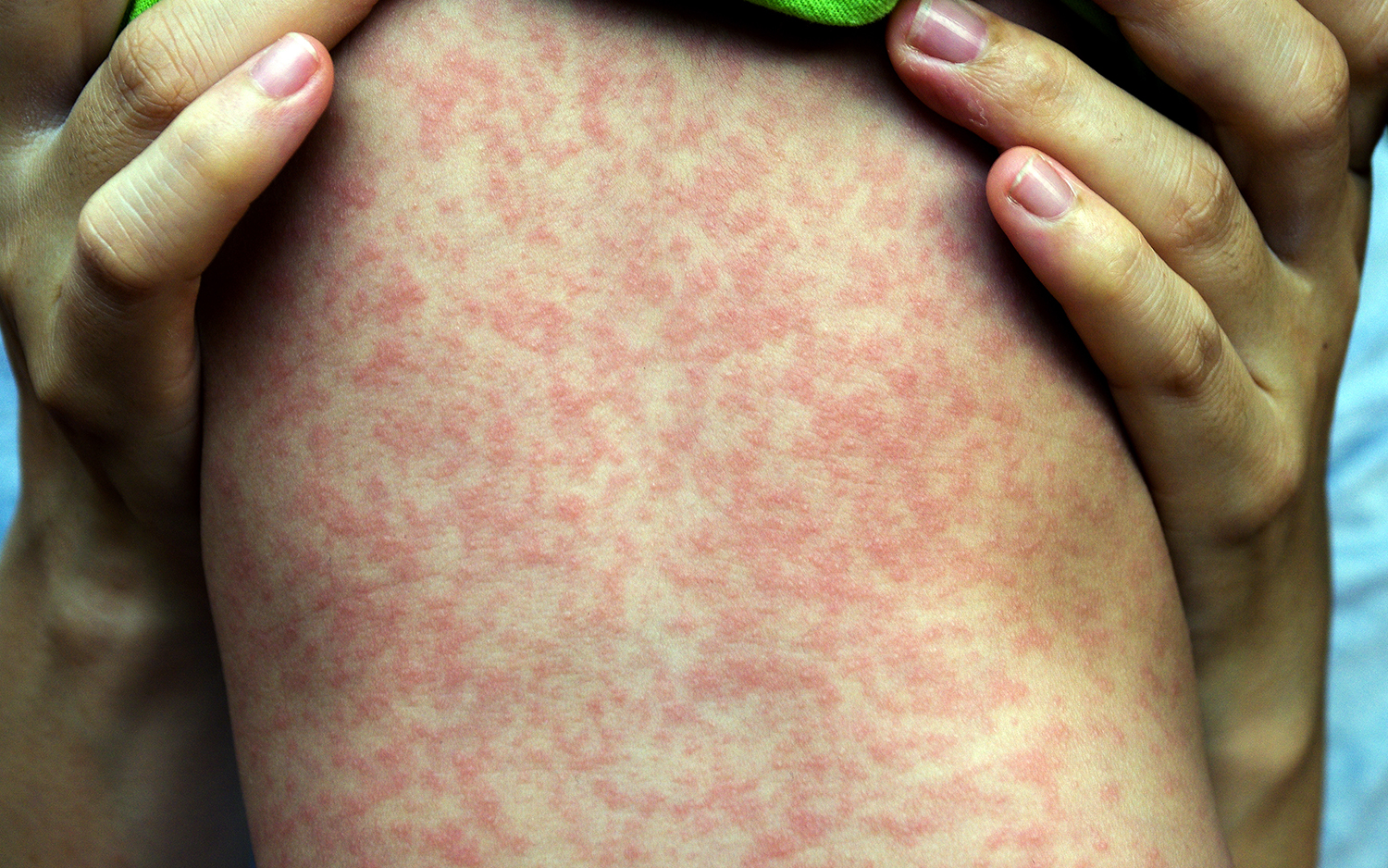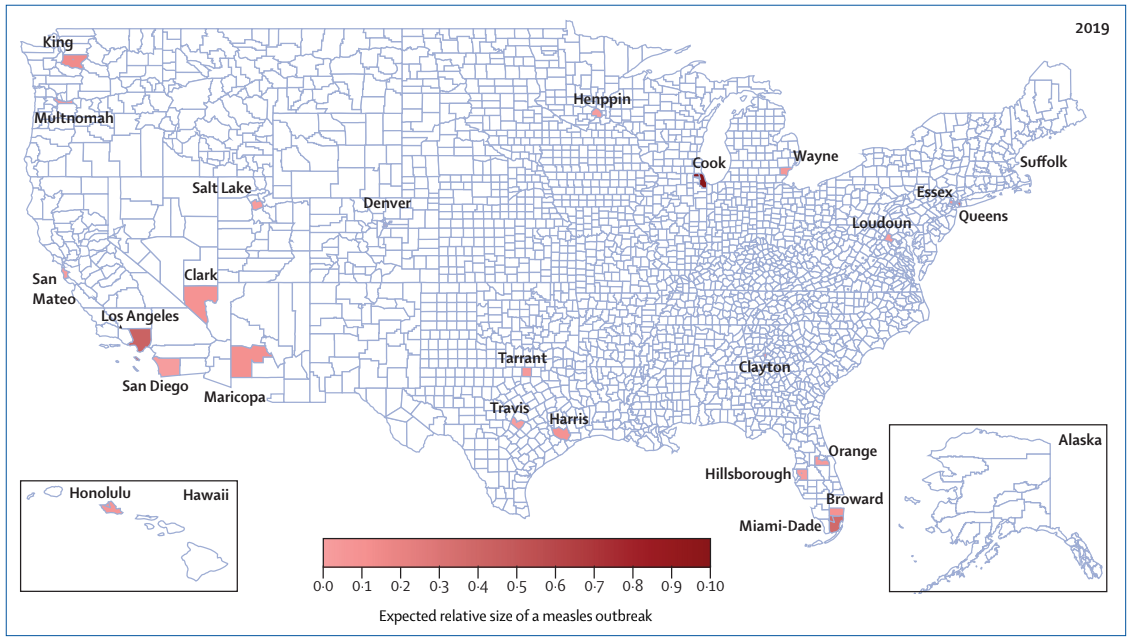Experts ID 25 US Counties Most at Risk of Measles Outbreaks

Nearly two decades after measles was successfully eliminated from the United States, public health researchers have pinpointed the 25 counties in the country that are most at risk for new outbreaks, including some of the most populated regions in the U.S..
The counties on the list cover regions including the five largest U.S. cities: Queens County in New York City, Los Angeles County, Chicago's Cook County, Houston's Harris County and Phoenix's Maricopa County. Counties in many other major American cities also made the list, which was published yesterday (May 9) in the journal The Lancet Infectious Diseases.
Big counties came up again and again due to the specific mix of factors that drive measles outbreaks, the researchers said.
"You can't have a new outbreak of measles in the United States without two things happening," said senior study author Lauren Gardner, a public health expert at Johns Hopkins University in Baltimore. First, "you have to have measles introduced, which involves infected travelers from other countries. And [second], you have to have a population that's vulnerable, which means they have low vaccination rates." [27 Devastating Infectious Diseases]
That's why right now in the U.S., the risk of measles is most concentrated in areas with both lots of international travelers going back and forth from countries including India, Japan and Ukraine where there are currently significant measles outbreaks and with lots of people choosing not to get necessary vaccines.

(It's important to note that international travelers, not immigrants, are the source of the risk discussed in the study. Business people and tourists who go back and forth represent most of the international travel in question.)
All of these risks are the result of a global movement of people giving up on vaccines that had once had measles nearly eradicated in the U.S., Gardner told Live Science.
Sign up for the Live Science daily newsletter now
Get the world’s most fascinating discoveries delivered straight to your inbox.
"This is very much a global problem," she said. "There are huge outbreaks of measles across Europe, parts of Africa and the Philippines. And a lot of the cases that we're seeing in the U.S. are imported cases that are spawning local outbreaks."
These "imported" cases won't be the primary cause of cases in the U.S. forever, though. Already, she said, public health officials have seen the spread of measles within the U.S. The big example Gardner gave was the outbreak that started in Brooklyn, but spread to New Jersey and Michigan. Counties adjacent to the 25 on the list should also be considered at significant risk, she added.
Her team's analysis covered a decade, and showed that earlier data could have predicted some of the current outbreaks, such as the one in New York. But the analysis also showed that certain regions, like Cook County and Los Angeles County, are at significant risk of an outbreak despite not yet having had one.
"There's different risk factors at play," she said. "But the main [way to prevent measles] is making sure that people are vaccinated. And if people are vaccinated then the other risk factors really aren't something to be worried about."
- 10 Bizarre Diseases You Can Get Outdoors
- 13 Animal-to-Human Diseases Kill 2.2 Million People Each Year
- Germs on the Big Screen: 11 Infectious Movies
Originally published on Live Science.










